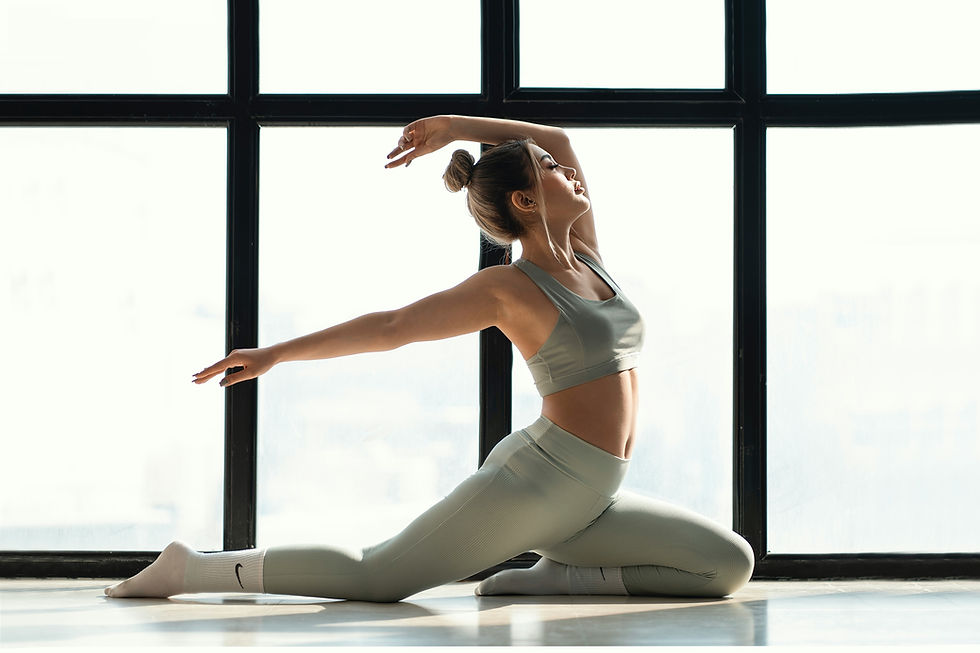Pilates While Pregnant: Everything You Need to Know from an Expert
- BY MODERN OPULENT GAZETTE

- Jul 17, 2024
- 4 min read

Pregnancy is a transformative journey, both physically and emotionally. As you navigate this exciting period, maintaining a healthy lifestyle becomes crucial. One excellent way to support your well-being during pregnancy is through Pilates. Pilates, with its focus on core strength, flexibility, and body awareness, is a popular exercise choice for many individuals looking to improve their overall fitness and well-being. But is it safe for expecting mothers? What should they be aware of? We consulted with an expert to bring you all the essential information you need know about doing Pilates while pregnant.
MEET THE EXPERT
Clarisa Strack van Schyndel is a qualified body control pilates teacher based in Sandton. She is the owner of COCO Pilates Studio. She has 8 years of teaching experience.
Is Doing Pilates While Pregnant Safe?
Every pregnancy is different, and it is very important to listen to the advice given to you by your medical practitioner. If your pregnancy is complication-free, then YES! Pilates is very safe during pregnancy.
Important Safety Considerations for Pregnant Women Practicing Pilates
Medical Clearance: Seek clearance from your medical practitioner before beginning or continuing with Pilates during pregnancy. This step ensures that you and your baby are safe
Experienced Instructors: Ensure your Pilates teacher has experience working with pregnant clients. There are small modifications and props used in Pilates to accommodate the unique needs of pregnant women.
Listen to Your Body: Always listen to your body and communicate with your teacher. It’s okay to do less, especially in the third trimester when your body movement becomes more limited. If something doesn’t feel right, stop immediately. Trust your intuition. You have to feel happy and comfortable with what you are doing.
Key Benefits of Practicing Pilates During Pregnancy
Pilates connects mind and body through movement and breathing. Having a space and time in a safe environment where you can relax and move is highly beneficial for your mental health. First-time moms, especially, may find pregnancy and the concept of bringing life into the world overwhelming. Setting aside time for yourself to do Pilates allows you to still your mind and release tension from your body. Maintaining a good exercise routine is vital during pregnancy, and while you may not be able to do all the same gym routines, Pilates helps you maintain or even gain muscle strength and feel good.
Pilates Positions to Avoid During Pregnancy
Avoid any prone (lying on your tummy) positions.
When lying on your back, it’s best to elevate the chest with a wedge or some pillows. You want your heart to be higher than the baby.
Safe and Effective Pilates Positions for Pregnant Women
Four-Point Kneeling: This position helps take some weight off the hips and allows the pelvis to relax. Go onto your hands and knees on the floor, round your spine up to the ceiling, and then back into a straight line.
Pilates Ball: Working on a Pilates ball can offer great comfort and release. Sit on the ball and rock your hips from side to side, forward and back, and in circles.
How To Strengthen Your Core and Pelvic Floor While Pregnant
You can strengthen your core and pelvic floor with the Contract/Relax exercise:
Sit on a chair with your feet flat on the floor and draw your lower tummy in.
Slowly and gently draw in the back passage (as if to stop yourself from passing wind). This is a gentle movement; don’t squeeze the glutes or inner thighs.
Take a small breath in while holding, then breathe out while still holding the connection for three counts.
Release the connection completely, allowing the abdominal muscle and the pelvic floor to relax.
Repeat this exercise five times.
Expert Advice for Expecting Mothers New to Pilates
Always start with private lessons. It’s important for you and the teacher to understand each other in your practice and for you to work at a pace that is right for you. |
Common Concerns and Misconceptions
A common concern is “I have no core strength” While it’s beneficial to start Pilates before pregnancy to develop core strength, you can still gain stability and strength during pregnancy, benefiting your recovery after the baby is born.
Adjusting Pilates Routines for Different Trimesters
First Trimester
You can perform most exercises as usual, except for lying on your stomach. Monitor your heart rate to avoid over-exertion, learn effective breathing techniques, and gain core and pelvic floor education.
Second Trimester
Begin using a wedge to prop up your chest when lying on your back. Offer support for the legs when they need to be lifted to reduce abdominal effort. Change positions frequently to avoid staying in one position for too long.
Third Trimester
Continue with the adjustments from the second trimester but be more sensitive to how you feel each day. Some days you might have the strength to build muscle, and other days you may need more relaxation.
Postpartum Pilates: Doing Pilates After Childbirth
Once cleared by your medical practitioner, usually 4-12 weeks post-birth, return to Pilates classes. Start slow to allow your body to adjust, gradually regaining strength. Pilates can also serve as valuable "me time," helping you maintain a sense of self amid the life changes of new motherhood. Taking care of your mental health is crucial. Pilates offers a supportive community and a chance to connect with others who understand your journey. Remember to be kind to yourself and give your body the time it needs to heal and strengthen.


























































